
Kingdom: Animalia - A Zoology Podcast for Kids
This is a for-kids-(and adults)-by-kids-(and chickadees) animal podcast. In every regular episode, your host, Devon, and podcast-overthrowal-plotting chickadee co-hosts, Chet and Cap, will dive into all the facts about one species of animal with jokes, fun facts, and quizzes along the way. Every third-ish episode is our game show, Animalia Fake!, in which there are three rounds with four outrageous animal facts; one of those facts is so outrageous it’s an Animalia Fake (it’s not true), and you have to guess which it is.
You can send in questions and episode suggestions to animals@kapods.org, and my website is https://kapods.org/animals. So what are you waiting for? Let’s explore this amazing Kingdom: Animalia.
New episodes every 1–2 months.
Kingdom: Animalia - A Zoology Podcast for Kids
Wild Turkey
Are you ready to gobble up some turkey facts?
______________________
How are Wild Turkey’s faces like chameleons? Did you know you can tell a turkey's sex by their feces? Do Wild Turkeys sleep in trees? Which turkeys gobble? Can turkeys fly? Today with your host, Devon, and co-hosts, Chet and Cap, you will learn everything there is to know about the Wild Turkey, Meleagris gallopavo.
Links:
If you have any questions, comments, episode suggestions, or verification that I’m not just talking into the void, please send them in (links below)! It really means a lot. Also, if you like this podcast, please share it with someone else who might!
Get in Touch: animals@kapods.org or kapods.org/contact
Visit My Website: kapods.org/animals
Follow in Your Favorite App: kapods.org/animals/follow
**Psst! Hey, you! It’s Chet and Cap! Do you have any questions for us? Just head over to kapods.org/acb and send a voice message or email with your questions, and we’ll answer them on an Ask the Chickadee Brothers episode of this podcast!**
Until next time, keep exploring this amazing Kingdom: Animalia.
This podcast is made by Kingdom: Animalia Podcasts.
[Devon] Hello and welcome to the second episode of–[Cap] Chicka The Chickadee Chicka Brothers Podcast! [Devon] What–no! It’s–[Cap] Chicka The Chickadee Chicka Brothers Podcast! [Devon] Wait. [Cap] Chicka The Chickadee Chicka Brothers Podcast!… Chicka The Chickadee Chicka Brothers Podcast! [Devon] Did you rig a [Cap] Chicka The Chickadee Chicka Brothers Podcast! [Devon] recording of you saying that Cap? [Cap] Chicka Yes… [Devon] *Sigh* You’re shameless Cap. Shameless. Sorry listeners. Welcome back to KINGDOM: ANIMALIA - A ZOOLOGY PODCAST FOR KIDS AND NOT THE CHICKADEE BROTHERS PODCAST. You might know that here in America, where I’m recording, it’s–[Cap] Chicka Cap Day! [Devon]…no it’s–[Chet] Chicka Chickadee Day! [Devon] Will you two ever let me do the intro without interruption? In America tomorrow is Thanksgiving, and in the spirit of this holiday we’re doing an episode on the Wild Turkey, Meleagris gallopavo. Enjoy.
[Devon] I think some of you might think the Wild Turkey looks ugly so let me see if this changes your mind. Wild turkeys are mostly dark, males are black with a bronze-green sheen and their rump (on birds it’s their lower back and not their rear ends) and tail feathers are brownish and marked with dark and white on their tips. Females are dark brown overall and both genders have dark brown wings with bright white–[Cap] Chicka Caps!! [Devon] Their wings have bright white caps, Cap? What would that even— Nevermind. As I was trying to say, their wings have bright white barrs. Now I can’t stop trying to imagine what a turkey’s wings would look like covered in white caps. Moving on, the bare skin on their–[Chet] Chicka Sunflower seeds! [Devon] Now you two are kinda forcing it. The bare skin on Wild Turkey’s necks can be anywhere from red, to blue, to gray, to pink. They are very large caps, one of the heaviest caps in North America in fact, and… [Cap] Chicka Sayy whaat? [Devon] Haha, got you Cap. They are very large birds, one of the heaviest birds in North America in fact, for reference, they’re just smaller than the Trumpeter Swan, and about twice the size, and four times the weight of the Ring-necked Pheasant, and for numbers they are forty-three point three to forty-five point three inches or one-hundred and ten to one-hundred and fifteen centimeters longs long from beak to tail. They have a wingspan of forty-nine point two to fifty-six point seven inches or one-hundred twenty-five to one-hundred forty-four centimeters wide and they weigh five point five one two to twenty-three point eight one two pounds or two point five to ten point eight kilograms.
[Devon] Now it’s time for a crash course on Turkey Anatomy
[Cap] Chicka Body part Chicka number one: [Devon] Caruncles. [Chet] Chicka Whats? [Devon] Car,-un,-cles. They are fleshy protrusions (thats a fancy word for something that sticks out of another object, like a bump) that grow all over turkey’s heads and necks. The male’s caruncles are typically larger and more obvious than females and grow larger on the bottoms of their necks. They’re usually the same color as the rest of their head and neck, but when they’re mating or angry they flush with blood, and turn red.
[Cap] Chicka Body part Chicka number two: [Devon] The snood. The snood is a long, and fleshy caruncle that attaches just above their bill. It is longer in males than in females, and changes length depending on the turkey’s feelings. When the turkey is relaxed their snood is really short — about half a [Cap] Chicka Cap long! [Devon] Half a cap long, Cap? It’s half an inch long, or one point two five centimeters. When the male struts to attract a female it fills with blood and it extends and flops over his bill. So far nobody knows what its use is.
[Cap] Chicka Body part Chicka number three: [Devon] Wattles. Wattles are a pair of floppy caruncles that hang on either side of the turkey’s throat. If there is only one, and in the center of their throat, it’s called a dewlap. A dewlap connects their neck to just below their–[Cap] Chicka Cap! [Devon] No! Just below their bill. It is obvious on both males and females, but more obvious in males. Like other caruncles they will turn red when the male is excited, angry, or strutting.
[Cap] Chicka Body part Chicka number four: [Devon] Ears. Their ears are just small holes on the sides of their heads just behind their eyes. Despite having no floppy outer ears, like us humans, they can home in on noises from a mile away.
[Cap] Chicka Body part Chicka number five: [Devon] The beard. And I know what you’re thinking, they do not have big hairy beards under their bills. It’s a large tuft of thin hair like feathers that grows on their chests. It can be anywhere from one to ten inches (or two point five to twenty-five centimeters) long. It grows three to five inches (or seven point five to twelve point five centimeters) a year, but it gets worn down, or else a four year old turkey could have a twenty inch (or fifty centimeter) long beard!
[Cap] Chicka Body part Chicka number six: [Devon] Spurs. [Chet] Chicka Yeeha! [Devon] Haha. It’s a little different. It’s not like the spikes on boots to get horses to move, but it is a spike. They grow on the back of their ankles and are made of keratin, like our nails and hair. In females they’re stubby because they have no use for them, while male’s spurs on the other hand (or the other wing) grow to be large and sharp, growing a quarter inch to half an inch (or five eights to one and a quarter centimeters) a year. They stop growing at about an inch and a half (or three point seven five centimeters) after four years. The males use their spurs to fend off other males. Actually most species in the family Phasiantidae have spurs.
This concludes our crash course on Turkey Anatomy
[Devon] Turkeys are Omnivorous like American Crows, which we talked about last month, but are mainly herbivorous. Their diet varies a lot throughout the seasons, and it includes: acorns, leaves, seeds, grains, berries, buds, grass, and roots. Since they are omnivorous they do eat some animals such as insects, spiders, snails and occasionally crabs. They do sometimes go for larger prey animals like lizards, frogs, snakes, and salamanders. They forage mostly by walking around on the ground. They often–[Cap] Chicka Wear caps! [Devon] No! They often scratch around in the leaf litter to find their food. They’ll sometimes climb–[Cap] Chicka Cap mountains! [Devon] No! What even is a cap mountain!? Nevermind. They will sometimes climb shrubs or trees to eat fresh berries. They forage most actively in the morning and evening. They travel in flocks to scour the ground for food. In Fall through early Spring they forage for nuts and seeds that they’ve found in the leaf litter such as acorns, beech nuts, pecans, hickory nuts, white ash seeds, wild black cherries and other nuts, seeds, and berries. In places where it snows in the Winter, when the snow is too deep to forage for seeds and nuts, they eat–[Chet] Chicka Birdseed! [Devon] No! They eat hemlock buds, evergreen ferns, club mosses (a type of small evergreen plant), and burdock (another kind of plant). During the Spring they eat bulbs (a swelling in some plant’s roots, to store energy) if they can’t find any nuts. In late Spring and Summer, turkeys will pick seeds from grasses and sedges. Like lots of birds, they swallow dirt and pebbles to help digest their food, since they don’t have teeth. [Chet] Chicka Ha ha Chicka ha! [Devon] What are you laughing about Chet? [Chet] Chicka I’m just Chicka imagining a Chicka turkey with Chicka teeth.
[Devon] Let’s do a multiple choice question. [Chet] Chicka Oooo! [Devon] Are male turkeys called A), Croakers, B), Gobblers, or C), Squackers? [Chet and Cap out of sync] Chicka B? [Devon] The answer is… Chet, give me a drumroll please… [Chet] Chicka Sure thing! [Devon] You’re both right! Male Wild Turkeys are called gobblers because they, well, .They’re also called “toms”, but “gobblers” is much more fun. Actually only the males gobble. It’s a mating call, like a Passerine’s song, or a rooster’s crow. Males will often gobble down from trees so that it will travel farther. Wild Turkeys have various other calls such as: they have cackling calls that both genders make as they fly down from their roosts, soft purring sounds they make while walking, and they’ll make a series of yelps to bring a flock back together if they’ve become scattered. Young turkeys (also known as poults) will whistle three to four times to their flock mates if they become lost. A courting male will often give a chump sound followed by a low hum. How they make those sounds aren’t very well known.
[Devon] As you probably know Wild Turkeys get around mostly by walking, but contrary to popular belief, Wild turkeys can fly, just in short bursts. When they feel scared females tend to fly, while males prefer to run. At night, like crows, they will roost in trees; they fly into the lower limbs and then move to a higher roost spot going limb to limb. They usually roost in flocks, but some turkeys prefer to go it alone. To attract the females the gobbler will first give his gobbling call and then when a hen arrives he will raise his tail feathers, lower his wings, puff out his body feathers, swell up his caruncles and strut back and forth rattling his wings and humming. Unlike crows and numerous other birds, Wild Turkeys are not monogamous and one gobbler will mate with multiple hens. Outside of the breeding season males will group together in all gobbler flocks, or a flobbler if you will, and won’t take care of the poults. After the poults hatch they will travel in family groups with their mother and will often combine with other family groups to form large flocks of poults and two or more hens.
[Devon] Going back in time a little, let’s talk about their nests. Their nest site is on the–[Cap] Chicka Cap! [Devon] No Cap! The nest site is A), on a tree branch, B), on the ground, C), in a burrow, or D), in an apartment building? I’ll reveal the answer after a quick break.
[Devon] Devon here for a quick message. My website has gotten an update! It’s no longer “kingdom-animalia-pod.webador.com” it’s now kingdomanimaliapod.com (with no spaces)! Don’t worry though, the old url will now redirect you to the new one. In other website news on the episode page for the American Crow episode (that’s kingdomanimaliapod.com/episodes/episode-01-american-crow) I posted a link to a memory quiz to test your memory and to help the information sink in. Also on the episode page for the American Crow I linked to another page on my website where I’ve made a comic for the episode! From now on I’m going to make a comic for each episode. Also there’s another on the homepage, it’s on general animal facts and also an animal fact question with a contact form to guess. There’s also a pole on Octopuses vs Squids. And now a message for anyone who correctly guessed the riddle for today’s episode: I’m producing this episode and the next one in advance because I want to get them out on specific dates so I won’t know if there will be any correct guesses for the riddle when I’m writing and recording. If I do get any correct guesses I might either do a bonus episode for riddle guesses, or I’ll say them on the fourth episode. If you really want me to do your episode suggestion for episode four you’ll have to send it in pretty soon because I’m recording episode three in advance (it should come out between December twenty-fourth and twenty-fifth) and I have to put the riddle in it. Now back to Wild Turkeys.
[Devon] Welcome back to Kingdom: Animalia - A Zoology Podcast for Kids; I’m your host Devon and these are my co-hosts… [Cap] Chicka Cap… [Chet] …Chicka and Chet! [Devon] Before the break I left you with a dangling question: do Wild Turkeys nest on A), tree branches, B), the ground, C), in burrows, or D), in apartment buildings? [Cap] Chicka D! [Chet] Chicka A! [Devon] Sorry Chet and Cap, you’re both wrong. The answer is… drumroll please Chet,… B! On the ground! Better luck next time you two. The nest is usually in a concealed location, at the base of a tree, under a shrub, under a brush pile, or in tall grass, but sometimes it’s in open hayfields. The nest is a shallow depression in the dirt (about one inch or two point five centimeters deep, eight to eleven inches or twenty to twenty-seven point five centimeters wide, and nine to thirteen inches or twenty-two point five to thirty-two point five centimeters long) and is sparsely lined with blades of grass and leaves found only around the nest site. Occasionally more than one hen will lay eggs in one nest. The eggs are white to pale buff (a yellowish orange color) and have reddish brown spots. One hen will lay four to seventeen eggs and will only raise one set of chicks each year. The eggs are actually pretty small – they’re one point six to one point nine inches or four to four point seven five centimeters wide – only about the size of a chicken egg. The poults are pretty well developed when they hatch and are covered in tawny brown and buff down. They’re ready to leave their nest with their mother soon after they hatch. The poults feed themselves, but the hen tends to, and sits on them at night (brooding) for several weeks after hatching. The poults can make short flights after one to two weeks, but they’re not fully grown until they’re several months old. Still sooner than a human though.
[Devon] Now onto range and habitat. [Cap] Chicka American Crows Chicka live in Chicka America so Chicka Wild Turkeys Chicka live in… Chicka Wild? [Devon] No Cap. Like American Crows they live in North America. They live in all of the US except for Alaska, and live in parts of Mexico, and southern Alberta, Ontario, Manitoba and Saskatchewan Canada. [Chet] Chicka They don’t Chicka live in Chicka Turkey? [Devon] No, they don’t. I’ll get into why they share a name later in the episode though. Wild Turkeys in northeastern North America live in mature oak and hickory forests and humid forests of red oak, beech, cherry, and white ash trees. In the southeast, turkeys live in pine, magnolia, beech, live oak, pecan, cedar elm, American elm, hickory, bald cypress, cottonwood, sweetgum, tupelo, or water ash tree forests with sourwood, huckleberry, blueberry, greenbrier, rose, mountain laurel, wisteria, buttonbush, or Carolina willow lower to the ground. Southwestern turkeys are often found in open grassy savannah with small oak tree species. In Alberta, Canada, turkeys live between pinyon-juniper and ponderosa pine forests. They’re nonmigratory, but in some seasons (especially in Fall) they may wander. Turkeys in the Rocky Mountains tend to have whitish tips on their rump and tail feathers; whereas other populations of turkeys have rusty or chestnut tail tips.
[Devon] Now onto the topic that all of the turkeys listening are wishing I skipped… predators. Wild Turkeys are hunted by coyotes, bobcats, mountain lions, raccoons (mainly for the poults), Golden Eagles (again, mainly for the poults), Great Horned Owls (yet again, mainly for the poults), and yes, humans. Nest predators include raccoons, opossums, Striped Skunks (that’s a mouthful), Gray Foxes, groundhogs A.K.A. woodchucks A.K.A. Marmots, other rodents, Rat Snakes, Bull Snakes, and birds.
[Devon] Who’s ready for some FUN FACTS?!?
We have a lot of these this episode, so let’s get started. [Chet] Chicka Oh, boy [Devon] Hold onto your turkeys Chet…
[Chet] Chicka Fact number Chicka one: [Devon] Ben Franklin wanted the Wild Turkey to be America’s national bird and not the Bald Eagle.
[Chet] Chicka Fact number Chicka two: [Devon] Wild Turkeys can fly, as I briefly mentioned. It’s a common myth that Wild Turkeys can’t fly. They can actually fly up to, A), forty five miles or seventy-two point four two kilometers, B) fifty-five miles or eighty-eight point five one kilometers, or C), sixty-five miles or one hundred and four point six kilometers per hour? What do you think, Chet? [Chet] Chicka A! [Devon] Cap? [Cap] Chicka C! [Devon] Give me drumroll please, Chet [Chet] Chicka Okeedok [Devon] The answer is…B! Wild Turkeys can fly up to fifty-five miles or eighty-eight point five one kilometers per hour in short bursts!
[Chet] Chicka Fact number Chicka three: [Devon] As briefly mentioned they’re faces can change colors! You can actually tell a turkey’s emotions by the color of their face. Their faces can change to white, blue, and red. The lighter their face, the calmer they are, and if their face is darker the more intense their emotions are.
[Chet] Chicka fact number Chicka four: [Devon] Now for a kind of gross fact — cover your ears if you don’t want to hear about animal… feces… You can tell a turkey’s gender by their feces. Male’s droppings are shaped like the letter “J” while female’s are spiral shaped.
[Chet] Chicka Fact number Chicka five: [Devon] Turkeys can see better than humans. They can see three times further than humans and can also see in color. Since their eyes are placed on the sides of their heads they have two hundred seventy degree vision.
[Chet] Chicka Fact number Chicka six: [Devon] Turkeys have a better preserved fossil record than most other birds. Because of their large size and compact bones their bones stay pretty well intact. Some turkey fossils dating back more than five million years old have been excavated in the southern US and Mexico.
[Chet] Chicka Fact number Chicka seven: [Devon] Wild Turkeys can swim! They can swim by tucking in their wings tight, spreading their tail feathers, and kicking hard with their legs.
[Chet] Chicka Fact number Chicka eight: whoof [Devon] The English word for the bird may come from that the routes to ship them from North America to European markets passed through the country of Turkey.
[Chet] Chicka That was Chicka a lot Chicka of facts.
[Devon] Now let’s do the Glossary where I’ll explain some words from the show you and especially younger listeners may not know.
Word number one: Phasiantidae: Phasiantidae is the bird family that includes Turkeys (of course), Grouse, Chickens, Partridges, and Pheasants. Fun fact: “Peacock” is the name for a male peafowl and peafowl are a kind of pheasant.
Word number two: Monogamy: Monogamy is the animal behavior in which the male and female will stay together for at least one mating season.
Word number three: Down: down, or down feathers, are feathers on birds made to keep them warm, and are typically the only feathers on young birds.
[Devon] Okay. We've come to the end of episode two. I was surprised how fast I made this episode, in fact I was completely gobsmacked! Thanks for the rimshot Chet. You’re getting pretty good with that drumkit I gave you. [Chet] Chicka Thank you. [Devon] This was a pretty fun episode and if you want to know where I found my information and gobble up some more turkey facts, you can look at my Works Cited page which is linked in the show notes and you can view it on the page on my website for this episode which is kingdomanimaliapod.com/episodes/episode-02-wild-turkey. You can contact me at kingdom.animalia.pod@gmail.com or use the contact form on my website which is at kingdomanimaliapod.com/contact. You can use those to suggest animals for me to do episodes on (remember: if you want me to do your suggestion for episode four send it in soon!!), ask questions, and send in your answers to the riddle for episode three. So here it is: “My name makes me sound wet but that’s not true, my head adornments are spikey, in winter my eyes are a very pretty blue. Who am I?”. So, any guesses? Send in your answers and I’ll tell you if you got it right, but if you got it wrong you’ll have to wait until December twenty fourth or fifth to find out. So until next time, have a happy Thanksgiving, and keep exploring this amazing Kingdom:, Animalia. Bye! [Chet] Chicka Bye! [Cap] Chicka Bye!
[Cap] Chicka Gobble gobble.
[Chet] Chicka Hey. Chicka Are you Chicka still listening? Chicka I have Chicka some news Chicka Devon missed. Chicka Cap and Chicka I have Chicka an email Chicka address! Chicka It’s “Chickadee.pod@gmail.com”. Chicka You can Chicka use it Chicka to email Chicka us suggestions Chicka on taking Chicka over the Chicka show. Chicka Bye now.
Podcasts we love
Check out these other fine podcasts recommended by us, not an algorithm.
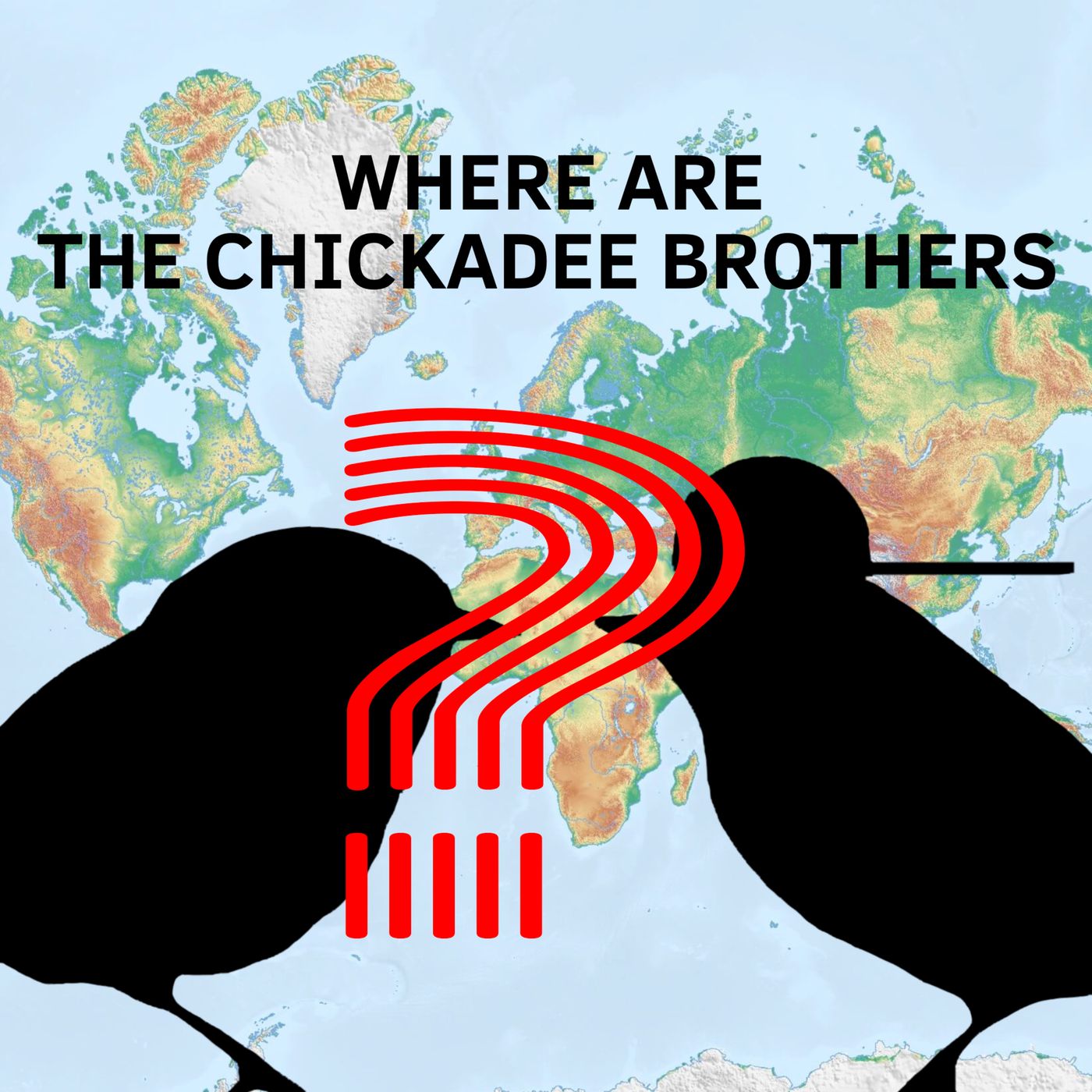
Where Are the Chickadee Brothers?
Kingdom: Animalia Podcasts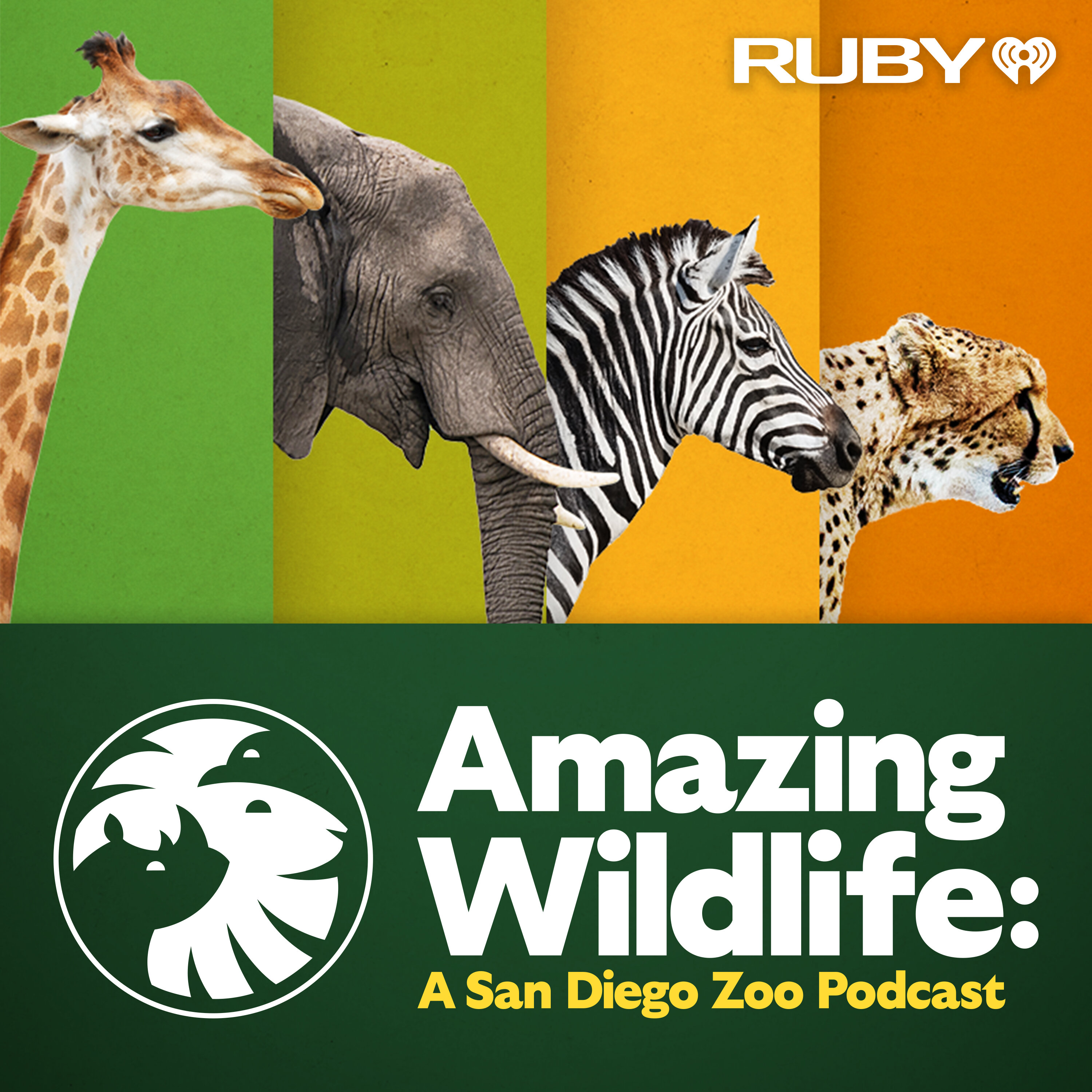
Amazing Wildlife: A San Diego Zoo Podcast
iHeartPodcasts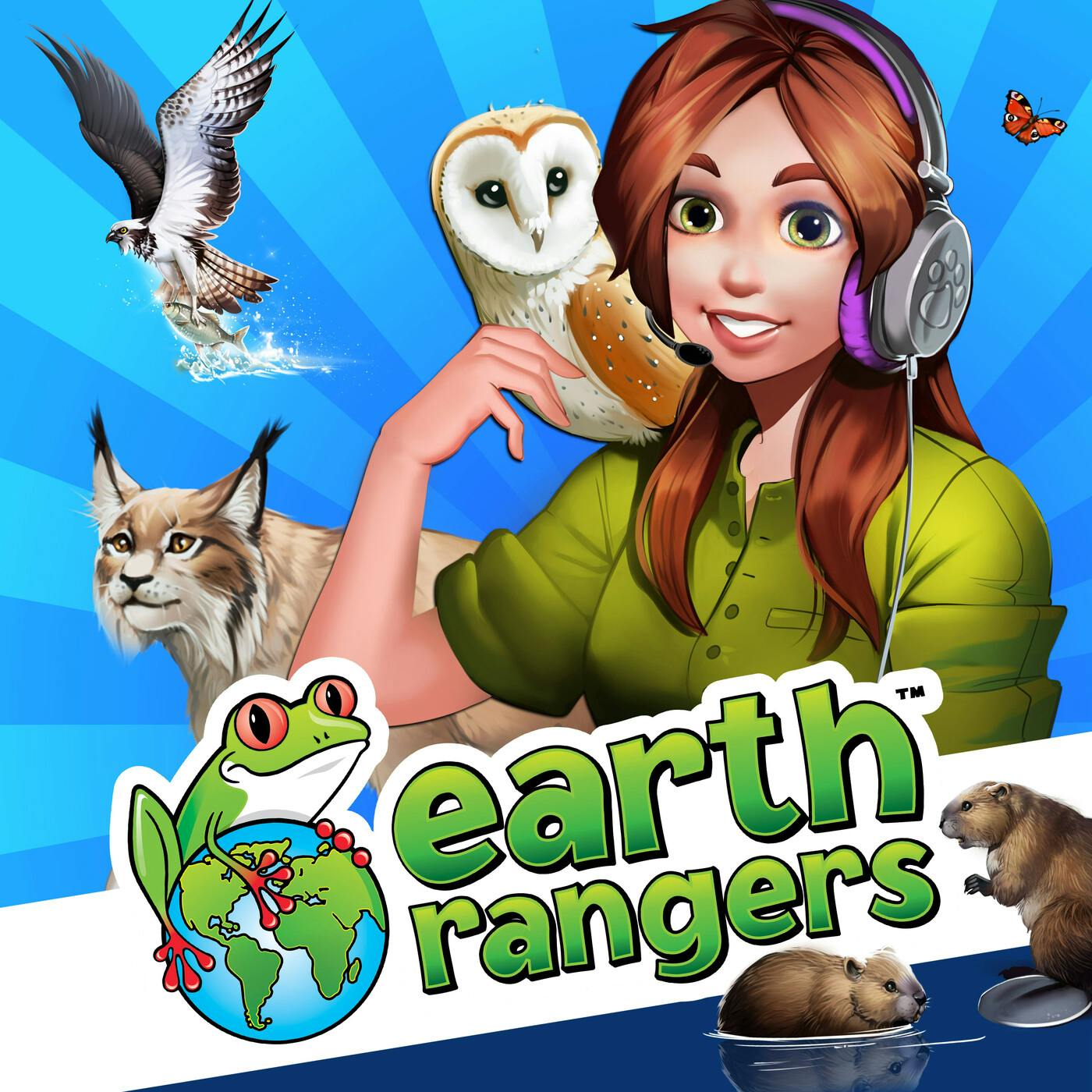
Earth Rangers
GZM Shows
Short Wave
NPR
Unexplainable
Vox
Science Friday
Science Friday and WNYC Studios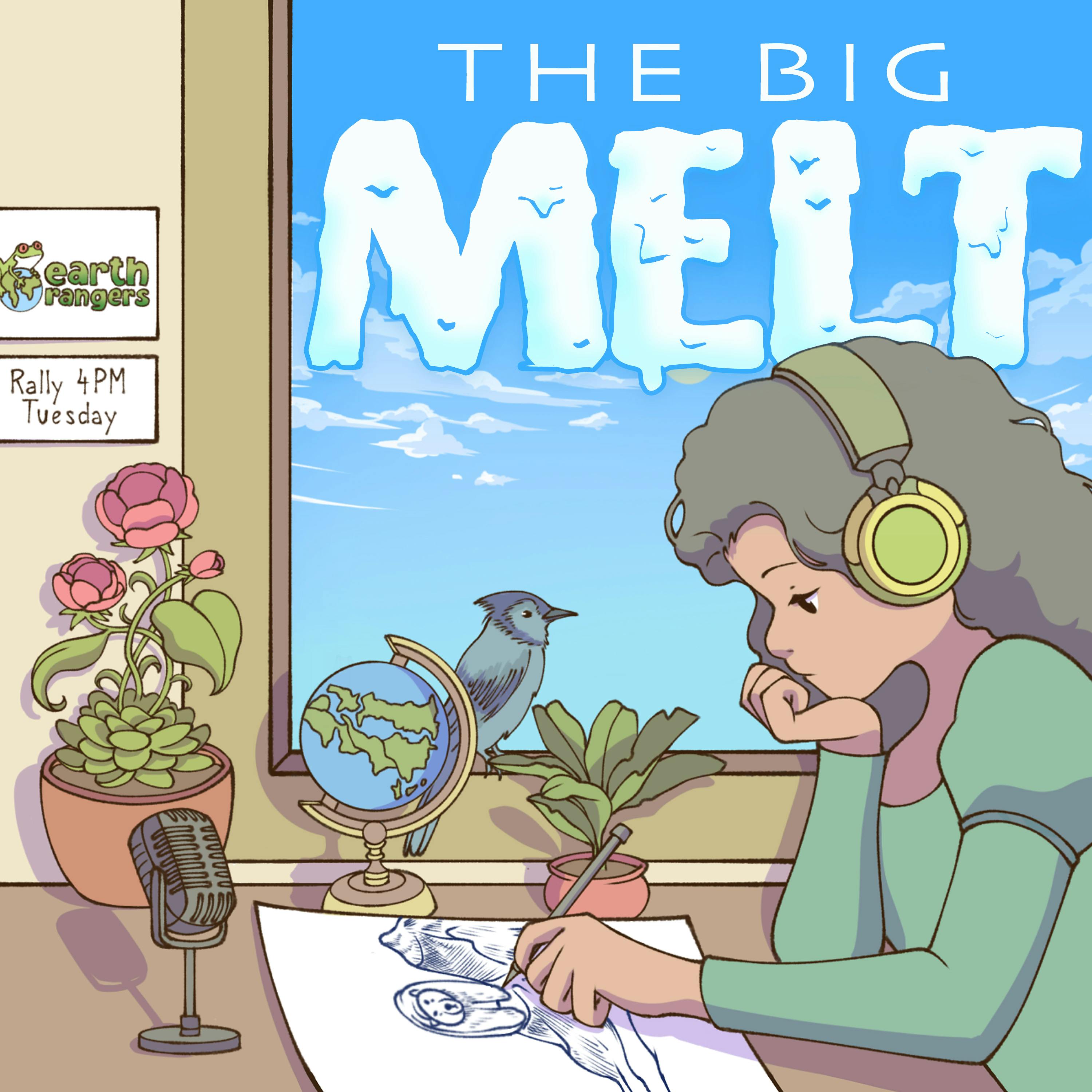
The Big Melt
Gen-Z Media
How Wild
NPR
Six Minutes
GZM Shows
Radiolab
WNYC Studios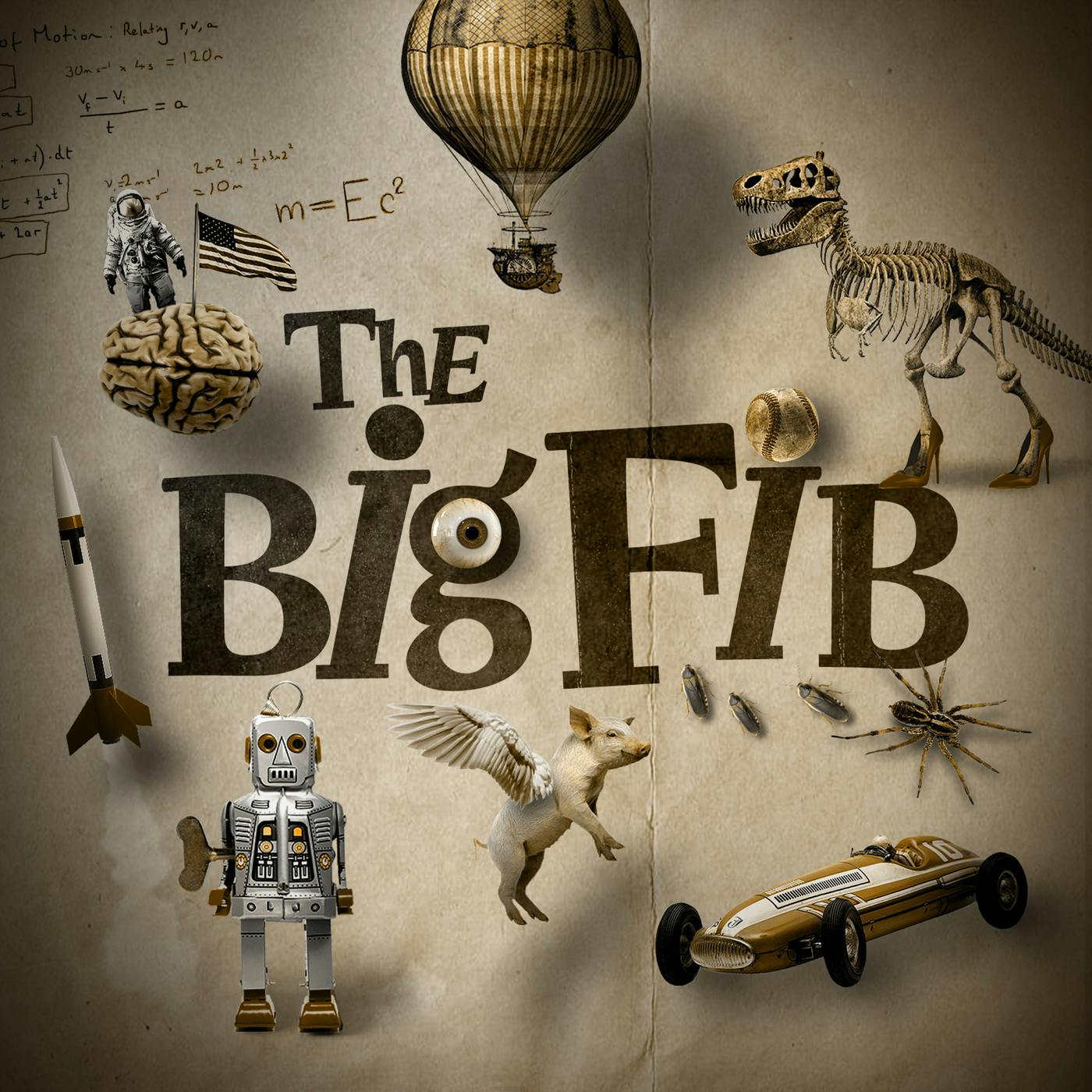
The Big Fib
GZM Shows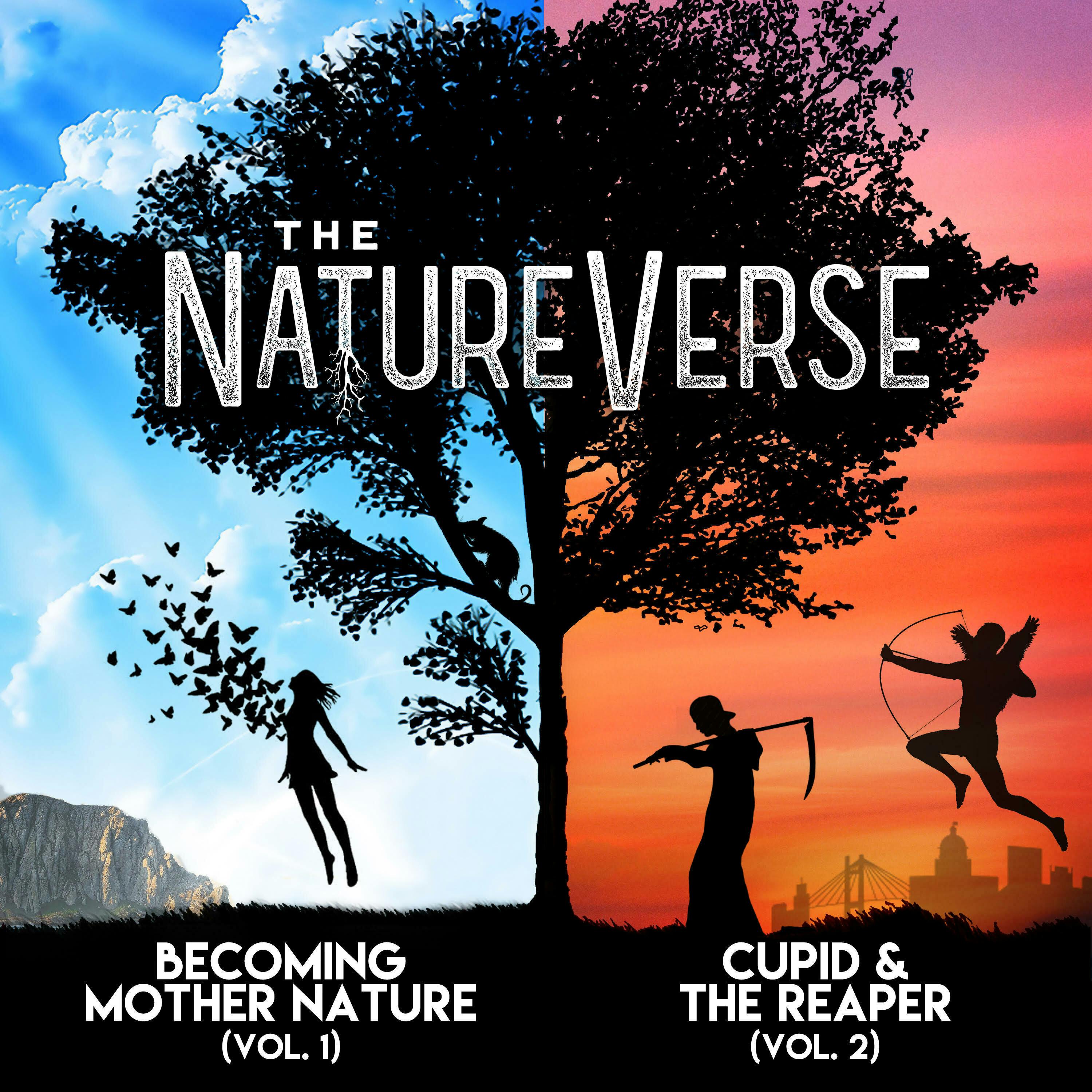
The Natureverse: Becoming Mother Nature
GZM ShowsThe Show About Science
Nate | The Company Making Podcasts
Tai Asks Why
CBCCool Facts About Animals
Cool Facts About Animals Podcast

